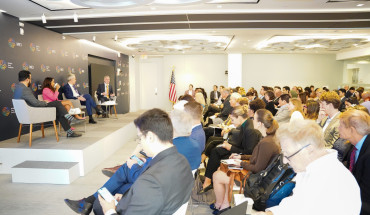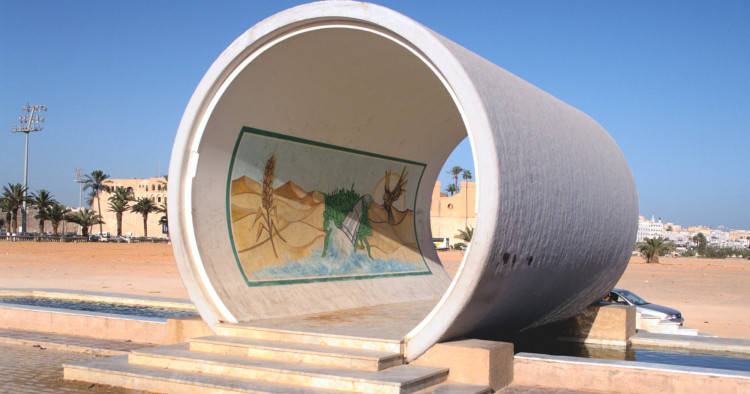Concerns over groundwater issues have been growing in the last few years, given the amplification of drought in many parts of the world. Notably, the topic received expansive coverage at the United Nations Summit on Groundwater in Paris last December and then again at the March 2023 U.N. Water International Conference in New York. Groundwater resources are critical for the Middle East and North Africa region as much of it suffers from high water scarcity, intensified by economic and political/governance challenges. For some countries, especially in North Africa, groundwater aquifers are the only sources of available freshwater supply.
Due to various factors, including population growth and climate change, the demand for non-renewable water resources across MENA is increasing. Rural communities, in particular, heavily depend on groundwater as their primary source of water supply, but the problem also affects other communities and economic sectors.
Although water is a crucial element in the U.N.’s Sustainable Development Goals (SDGs), there isn’t yet an explicit SDG for groundwater. A 2018 study by the United Nations University Institute for Water, Environment, and Health, however, illustrated that groundwater could have an evidence-based or logical connection to the SDGs.
Groundwater aquifers may extend across national borders, and globally, there are over 300 such transboundary aquifers, with 72 in Africa. Aquifers crossing international borders can create challenges for negotiations over water-sharing since available groundwater is difficult to quantify and measure. If one country heavily extracts water from a shared transboundary aquifer, it can affect the availability of neighboring countries that may also depend on this resource.
Moreover, groundwater and transboundary aquifers face interlinked challenges, especially when considered a country's or local community's primary water source. First of all, multiple issues affect the use of groundwater and present significant complications, with various factors, including overdraft, waterlogging, salinization, and pollution from human activities, contributing to depletion. Indeed, for many countries in the MENA region, extraction exceeds groundwater recharge. At the same time, the recharge rate is decreasing, leading to an overall decline in groundwater quantity and quality.
Second of all, even when joint agreements are established for a particular transboundary aquifer, a lack of accurate data and knowledge hinders cooperation and management efforts. The absence of specialized institutions and mechanisms that receive permanent funding to develop a long-term vision for managing these resources exacerbates the situation. The organizational and executive systems are also weak, further contributing to the issue.
Finally, from a consumption perspective, in many countries of the region, the extraction of groundwater resources is often unrestricted, necessitating more incentives for water conservation in response. The excessive pumping of groundwater aquifers further complicates the issue on the transboundary management level, which already faces numerous complex challenges that require immediate attention. Those challenges include unclear policies, inadequate funding for monitoring and capacity-building, and weak institutions with overlapping responsibilities that hinder efficient functioning.
In North Africa and West Asia, 21 of the region’s 23 countries share transboundary aquifers. Among the most prominent examples is the Nubian Sandstone Aquifer System (NSAS) in northeastern Africa, one of the world’s largest aquifer systems, covering approximately 2.2 million square kilometers. Few transboundary aquifers have shared usage arrangements, but the NSAS is notably governed by two multilateral agreements signed by Chad, Egypt, Libya, and Sudan in 2000. The first accord obliges the signatory countries to monitor and exchange information on groundwater resources within their national borders. The second establishes regulations to ensure continuous aquifer monitoring, with shared data accessible to all parties through updated regional information systems.
Proper management of the NSAS is crucial for maintaining regional security and avoiding transboundary conflicts by addressing each country's distinct interests and extraction levels that share this critical resource. For instance, Libya has developed its groundwater aquifers from the NSAS to supply coastal urban populations via the Great Man-Made River Project, while Egypt taps this cross-border reservoir for agricultural purposes. Therefore, the current NSAS governance agreement could be made more effective by taking into more significant consideration climate change impacts and the unequal distribution of groundwater supply.
Such an enhanced collaborative approach could facilitate multilateral decision-making and expedite the transition from mere information-sharing to a coordinated effort in managing tasks and projects. Finally, utilizing international financing and development opportunities while considering ecological factors and conservation can also strengthen the work of the NSAS’ Joint Authority through regional cooperation and knowledge exchange.
By integrating NSAS reliability goals into existing national water policies, the multilateral governance mechanism can better take into account the management of groundwater resources at the signatory countries’ national level. This entails implementing land-use planning strategies that help preserve catchment functions, promote better agricultural methods, and adopt efficient wastewater management practices to reduce the number of pollution sources. Sustainable and equitable use of transboundary aquifers also urgently requires improved coordination between different sectors. Finally, standardized technical bases, social understanding, and information exchange are necessary to address the transboundary impacts of groundwater extraction practices from a shared aquifer. This integration of national and aquifer-wide water-management policies across countries would ensure that the NSAS system is administered more effectively while guaranteeing the groundwater resources in each country are reliably maintained for the mutual benefit of all signatories to the water-sharing agreements.
Adequate and equitable groundwater use is critical to achieving sustainable development. However, it requires careful management, monitoring, and integrated preventive approaches. It is essential to recognize that groundwater can have significant implications for various SDGs, particularly those related to transboundary issues.
From a global perspective, to strengthen collective responsibility toward the management of transboundary groundwater aquifers, the status of groundwater should, as a matter of course, be incorporated as one of the indicators of success in fulfilling the SDGs. This is particularly true for the water-centric SDG 6, which concerns ensuring the availability and sustainable management of water and sanitation for all, highlighting governance, water management, and supply. But groundwater also has implications for various other SDGs, including those associated with eradicating poverty, ensuring food security, promoting gender equality, guaranteeing sustainability, preserving ecosystems, and mitigating the effects of climate change.
Proper groundwater management that maintains the availability of safe and clean water for consumption while promoting sustainable utilization is critical to achieving all of the above-listed goals. However, achieving this requires the implementation of sound policies and strategies that take into account not only local and regional variations in groundwater resources but also the participation and collaboration of all stakeholders involved in managing this vital resource.
Malak Altaeb is a Non-Resident Scholar with MEI’s Climate and Water Program and an independent consultant, writer, and researcher based in Paris, France.
Photo by Vivienne Sharp/Heritage Images/Getty Images
The Middle East Institute (MEI) is an independent, non-partisan, non-for-profit, educational organization. It does not engage in advocacy and its scholars’ opinions are their own. MEI welcomes financial donations, but retains sole editorial control over its work and its publications reflect only the authors’ views. For a listing of MEI donors, please click here.













